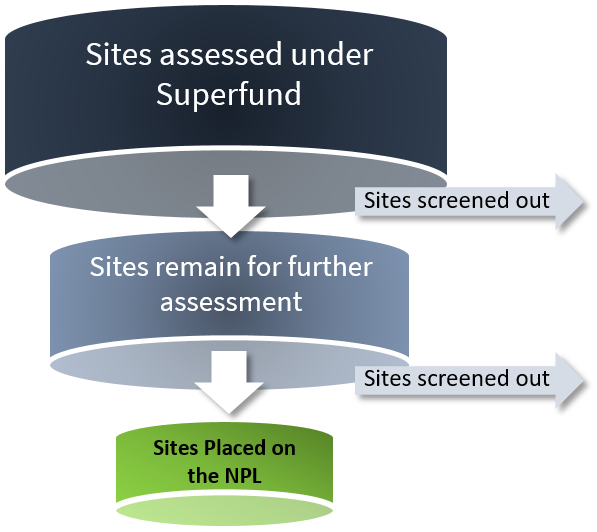Superfund Site Assessment Home
About Superfund Site Assessment
Assessment of historic lead smelters.
- EPA Lead Smelter Strategy Summary Report (PDF) (66 pp, 4.2 MB,
About PDF) - Strategy for Addressing 464 Lead Smelter Sites (PDF) (32 pp, 1.1 MB,
About PDF)
Superfund site assessments evaluate site conditions to identify appropriate responses to releases of hazardous substances to the environment. During this process, EPA, states, tribes and other federal government environmental programs collect data to identify and evaluate hazardous waste sites based on the Hazard Ranking System (HRS) criteria. The HRS is a numerically based screening system that uses information from initial limited investigations to assess the relative potential of sites to pose a threat to human health or the environment. The HRS is the principal mechanism EPA uses to place uncontrolled waste sites on the National Priorities List (NPL). Sites with HRS scores of 28.50 or greater are eligible for placement on the NPL. Only non-Federal sites on the NPL are eligible for Superfund Trust Fund-financed remedial actions. Most sites assessed for potential NPL listing are screened out of the program as illustrated in the figure below.

